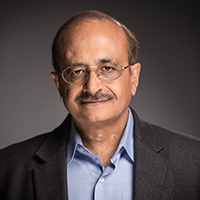‘The Future of eLearning Will Be Less an Alternative to Traditional Universities and More an Integrative Way of Managing Learning’
.jpg)
Ahead of the eLearning Stakeholders and Researchers Summit 2017 which starts October 10, the HSE News Service asked the key speakers about whether online platforms compete with universities, the barriers for eLearning, and the prospects for the field.

Inessa Roman-Pogorzhelskaya,Coursera Regional Manager
The key barriers to eLearning include remaining scepticism and its image as ‘incomplete learning’ among students, their parents, universities, and, most importantly, employers.
This sceptical attitude comes from a general conservativism about everything related to education, as well as the varying quality of online courses. Low-quality courses persist because there is still a lack of professionals with the ability to create good courses, including producers, teaching design experts, and technical professionals. A common attitude is that online courses are simply video footage of classroom lectures.
At the same time, some activities are difficult to implement online, such as laboratory-based work, as well as communication and team work with classmates and the instructor. But augmented reality and artificial intelligence technologies are promising major change.
I also frequently hear from both partner universities and legislators that it’s difficult to integrate eLearning in university processes.
But I believe that all these barriers won’t stop the progress of online learning; it’s only a matter of time.

William Kuskin, Vice Provost and Associate Vice Chancellor for Strategic Initiatives, University of Colorado Boulder
Online educational organizations vary. Some are indeed competitors to traditional university operations and some are simply vendors, university colleagues in a sense, but not profoundly so.
A few online educational organizations transcend these categories to become true educational partners. Coursera, for example, is such a colleague. Traditional universities and colleges are invested in continuing their most successful practices. In a sense, their very success makes it difficult for them to change. Born from disruptive technology, Coursera contains within its very identity a sense of experimentation and innovation. Because of this, Coursera is an online educational organization that is a true university colleague, one that provides the traditional university with a space for imagining and implementing the future of higher education.
Speaking about the future of online learning, one should be careful about the business of prophecy. I would suggest that online education, largely restricted to internet coursework as it is, is still in a formative stage. Its future will tie it more closely with the traditional university structure so that it will be less an alternative modality and more an integrative way of managing time, space, people, and learning in the service of global critical thinking, employment, and sustainability.

Margarita Zobnina, Director of the Ecosystem Project Department at IIDF (Internet Initiatives Development Fund)
Online learning is developing along two paths today: towards adaptability, and towards blended learning.
Most online courses and programmes still follow the same principles as traditional classes and include the same lectures, tests and assignments for all students. Lectures are usually split into several 10- or 15-minute parts, so that they fit an average person’s attention span. This situation will gradually change, and contents will be adjusted to align with the interests of individual students, including their preferences, tasks, priorities, and the desired depth of coverage for certain topics. This means that the course will transform from being a linear process to a ‘garden of forking paths’, and that lectures will become both more fragmented and varied in terms of the tools and methods, while at the same time becoming more interactive and diverse.
I’ll also note an important trend as it relates to the role of tests. Rather than serving as a tool to assess students, they are becoming a tool that gives teachers feedback on how to improve course contents and presentation.
The second area of development is blended learning, which is an integration of online and offline education. This allows the best parts of these tools to be used: students gain knowledge whenever it’s convenient and as often as they want, and teachers can use the time for interactive activities (project work, games, and skills development) and help set the pace in learning.

Nikhil Sinha, Chief Business Officer, Coursera
We have only just begun to deliver on the promise of online learning. Through the application of data and artificial intelligence, online learning platforms like Coursera will be able to create personalized learning products and pathways that provide learners the exact skills and competencies they need to achieve their personal and professional goals and aspirations. Platforms like Coursera have thousands of courses, hundreds of thousands of assessments, and millions of hours of online content. Expert systems will sift through this data, matching learners to content based on their aspirations, their current levels of knowledge and their analysis of content.
Until now online learning platforms have been trying to replicate the in-person learning experience. The future of online learning is to go beyond the face-to-face experience. Instead of students with diverse needs, learning styles and prior preparation listening to the same lecture in a classroom, online learning will deliver a learning experience tailored to the needs and goals of each individual learner. This is the real promise of the online revolution — personalized learning at scale.

Deborah Keyek Franssen, Associate Vice President for Digital Education & Engagement, University of Colorado System
Rapidly changing technology and workforce demands continue to put pressure on traditional postsecondary institutions to provide greater access to postsecondary content across all disciplines, especially for adult learners. To meet this demand, universities will move away from traditional teaching methods and business models that have been adopted, with minor alterations, in current online education offerings.
Three trends will characterize future online education. First, there will be an intense individualization of learning, for some topics and levels, through the implementation of adaptive learning systems, gamified learning, and artificial intelligence coaching and advising. Second, alternative and especially micro-credentials and badging will continue to have increasing value for adult online learners. Finally, education providers will increasingly design for online, at-scale learning that incorporates the effective and high impact practices that have allowed postsecondary education to endure for centuries, practices like intense and sustained peer interactions, expert feedback, and real-world, applied experiences that almost constitute an apprenticeship in a student’s chosen discipline.

Maxim Spiridonov, Cofounder and Director of Netology Group
In the years ahead, we will see a thrilling process in which online tools and other new educational methods are implemented in almost all areas of study. This implementation will be fast, since it depends less on public funding and grants given that commercial projects are usually less conservative, more flexible and able to change. At the same time, consumers of education will become increasingly used to eLearning, and won’t see it as something exotic. I believe that one result of the soft educational revolution that is taking place today and is catalyzed by online tools will be a healthier educational market and improved quality of education in many areas over the next 7 to 10 years.

